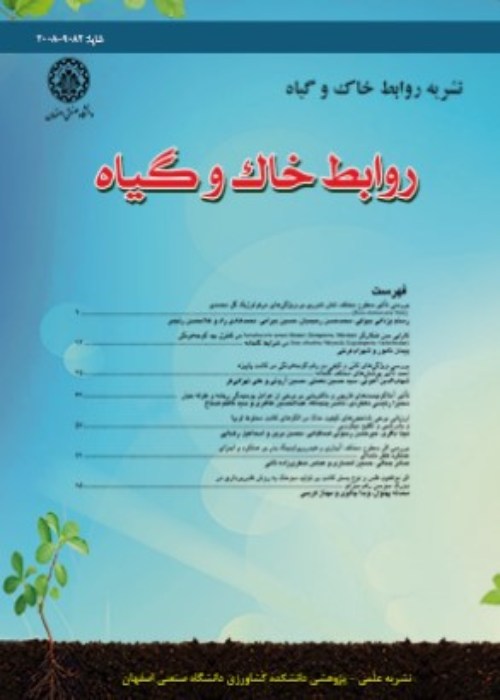Effect of Salinity Stress on Growth Characteristics and Water Relations of Quinoa in Symbiosis with Endophytic Fungus Serendipita indica
Quinoa (Chenopodium quinoa Willd.) is a plant with high nutritional value and growth potential, thus has a proper production in adverse environmental conditions. However, the enhancement of plant growth in these conditions could be achieved by different approaches. The use of endophytic microorganisms such as Serendipita indica fungus may help plant growth, especially under salt-stressed conditions. In this research, an experiment was performed using a factorial completely randomized design with three replications in a sterile sandy loam soil under greenhouse conditions. Experimental factors included two levels of S. indica (inoculation and non-inoculation) and salinity levels of 1.47 (initial electrical conductivity of soil), 5, 10, 20 and 30 dS/m which prepared by sodium chloride solution. The results showed that the interaction effect of salinity and fungal inoculation was significant for all measured characteristics (P < 0.05) except for proline. The inoculation of S. indica was able to increase the fresh weight of quinoa shoot by 18.5, 15.0, 39.4 and 45.4% compared to the non-inoculated treatment at salinity levels of 1.47, 5, 10 and 20 dS/m, respectively. The inoculation caused an increase in shoot fresh weight by 18% at initial electrical conductivity (5 dS/m), while a marked increase (~41%) was observed in inoculated plants compared to the no fungus treatment at EC level of 20 dS/m. The fungus increased the root weight by 12.9, 20.1 and 31.5% at salinity levels of 1.47, 5 and 10 dS/m compared to the non-fungal treatment, respectively. Compared to the non-fungal plants, the electrolyte leakage was significantly reduced in the inoculated plants at 10 dS/m. Fungal inoculation had pronounced effect on relative water content (RWC) of leaf at 5 dS/m and increased RWC by 23%, compared to the non-fungus treatment. Moreover, the increasing of salinity stress up to 30 dS/m reduced the percentage of root colonization by 19.9% compared to the non-fungus control. Overall, the application of S. indica significantly increased the biomass production of quinoa under salinity stress conditions.
- حق عضویت دریافتی صرف حمایت از نشریات عضو و نگهداری، تکمیل و توسعه مگیران میشود.
- پرداخت حق اشتراک و دانلود مقالات اجازه بازنشر آن در سایر رسانههای چاپی و دیجیتال را به کاربر نمیدهد.



